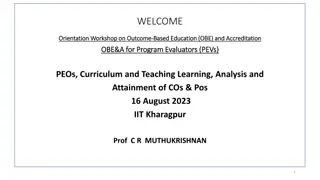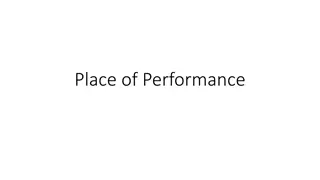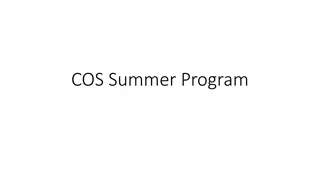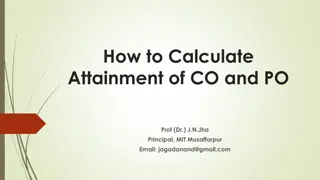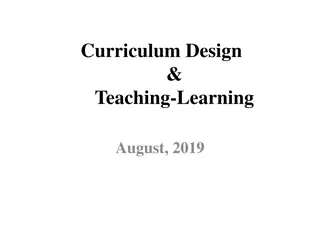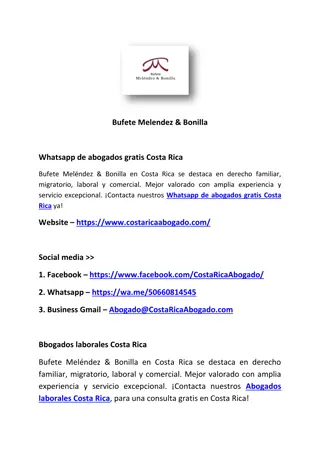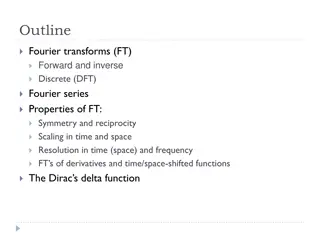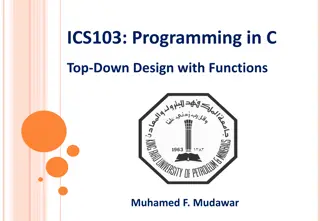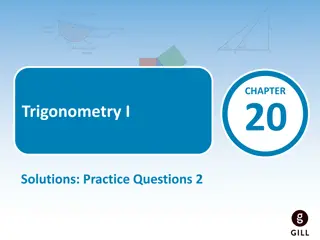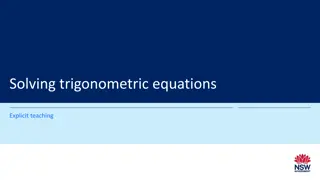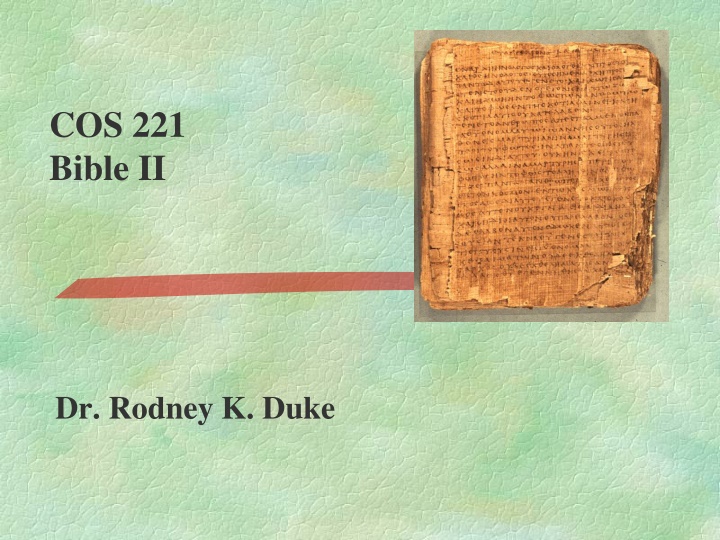
Biblical Narrative Composition
Delve into the complexity of biblical narrative composition, exploring elements of diversity and unity, historical perspectives, authorship considerations, and the purpose of doing history. Learn to formulate reading strategies for Old Testament narratives and unravel the intertwining of myth and history in storytelling.
Download Presentation

Please find below an Image/Link to download the presentation.
The content on the website is provided AS IS for your information and personal use only. It may not be sold, licensed, or shared on other websites without obtaining consent from the author. If you encounter any issues during the download, it is possible that the publisher has removed the file from their server.
You are allowed to download the files provided on this website for personal or commercial use, subject to the condition that they are used lawfully. All files are the property of their respective owners.
The content on the website is provided AS IS for your information and personal use only. It may not be sold, licensed, or shared on other websites without obtaining consent from the author.
E N D
Presentation Transcript
COS 221 Bible II Dr. Rodney K. Duke
DAY 3 Assign: (see handout) 1) #1 (Journal) 2) #7 Response to Doing History. 4) #8 Heart of the covenant 5) #9 Israelite laws Day Objectives: 1) Explain the process of communication 2) Describe the purpose of doing history 3) Formulated a description of biblical narrative 4) Formulate guidelines for reading OT narrative
Questions to answer about each narrative block 1) What are the elements of diversity which might be signs of a complex history of composition? 2) What are the elements of unity which bind this block together? What is the main intention of this block? What is the main theme/message? From what historical perspective was it edited (pre-exile, exile, post-exile)? 3) Does this block consist of independent, self-contained books ? 4) What can be said about the authorship of this material? Written by one author? Edited? Author identified internally or externally?
Topics: Why do history ? What should we look for when studying history? How does narrative communicate meaning/theology? Goal: Forming a Reading Strategy for Biblical Narrative
Doing History Why do we do history? What is the rhetorical intention? What, then, is the truth-value of history/historical memory? WHO? WHAT? WHERE? WHY? WHY? What should we expect from it? How should we evaluate it?
THE 'MYTH' OF HISTORY VS. MYTH Myth 1 a : usually traditional story of ostensibly historical events that serves to unfold part of the world view of a people or explain a practice, belief, or natural phenomenon History 2 a : a chronological record of significant events (as affecting a nation or institution) often including an explanation of their causes [Merriam-Webster Online Dictionary] Duke: If all history telling employs narrative, ultimately to explain the why of the past, and therefore, the nature of reality, then all history telling is mythic in a broad sense.
Overview of OT history as told in OT: 4 Main Events A) Abraham - "called" by God, promised descendents would become a nation, land, etc. (ethnic identity) B) Exodus & Law - key event was deliverance from slavery in Egypt, led to covenant relationship, giving of law. (religious ID) C) Enter land and become a nation. (landed and political ID) D) Exile and restoration (marks division between "Israelite" and "Judean" history) Hebrews Israelites Jews Monastery at possible location of Mt. Sinai
CREATION (Genesis 1-11) Origins Global perspective Basic Israelite world view regarding: divine sphere, human sphere, and natural sphere E.g. Yahweh is distinct from nature
Creation Theology Gen 1. Humanity meant to participate in the nature of God: created in God s image and likeness, given sovereignty over the domains of the earth. distinguish creational activity, priestly duties (good vs. evil) Gen 2. Humanity [of God s breath of life] meant to participate in relationship with God : walk and talk with, serve in Garden, AND obey. work and guard, priestly duties
CLAN (Genesis 12 - 50; +Job) Period: Patriarchs (Fathers) Character: Abraham Event: Call and Promise/Covenant: Son Nation Land Fate of Nations -blessing or curse Birth of ethnic identity
Gen 12:2-3. Promises to Abraham: A Mission to the World I will make you into a great nation and I will bless you. I will make your name great, and you be a blessing. I will bless those [plural] who bless you, and whoever [singular] curses you I will curse; and all peoples on earth shall be blessed through you. [blue = volitional, NOT future indicative]
CONFINEMENT 400 years (Exodus 1-19) Period: Slavery in Egypt Character: Moses (at end of this period) Over time the Hebrews went from guests to slave laborers
Purposes of the Exodus Event Exodus 9:13b: Let my people go, so that they may worship me, 14 or this time I will send the full force of my plagues against you and against your officials and your people, so you may know that there is no one like me in all the earth. 16 But I have raised you up for this very purpose, that I might show you my power and that my name might be proclaimed in all the earth. [Spoken to Pharaoh.]
Purposes of the Exodus Event Exodus 19:5-6 Now if you obey me fully and keep my covenant, then out of all nations you will be my treasured possession. Although the whole earth is mine, 6 you will be for me a kingdom of priests and a holy nation.
COMMANDMENTS 2 years (Exodus 20 - Leviticus 27) Period: Giving of the Law at Mt. Sinai Character: Moses Event: religious birth of Israel I ll be your God and you will be my people, if you will be holy as I am holy. [mv larfy hwhy wnyhla hwhy dha
Purposes of the Law Reveal the Holy character of God, that the Israelites might live according to His character and be blessed (Deut. 4:39-40; 6:1-3), AND Be a holy witness to the nations: Deuteronomy 4:5-6 See, I have taught you decrees and laws as the LORD my God commanded me, so that you may follow them in the land you are entering to take possession of it. 6 Observe them carefully, for this will show your wisdom and understanding to the nations, who will hear about all these decrees and say, "Surely this great nation is a wise and understanding people."
CAMPING 40 years (Numbers) Period: Wandering in Wilderness Character: Moses Event: rebelled when told to conquer the Promised Land; they will have to wait until the next generation comes of age
COVENANT 1 month (Deuteronomy) Period/Event: Renew Covenant w/ next generation Character: Moses Ready to enter the Land
CONQUEST 14 years (Joshua) Period: take the Land (birth of landed ID) Character: Joshua Play BibleMaps Conquest here
CYCLES (Judges - 1 Samuel 8) Period: Judges (Judges = charismatic, temporary military leader Cycles: rebel against God subjugated by neighbors repent and cry out delivered by judge
CROWNS 120 years (1 Samuel 9 - 1 Kings 11; + 1 Chronicles 1 - 2 Chronicles 9; Psalms - Song of Solomon) Period: United Monarchy ( birth of political ID) Characters: 1st 3 kings: Saul (Benjamin) David (Judah) Solomon (son of David)
CHASM 200 years (1 Kings 12 - 2 Kings 16; + 2 Chronicles 10 - 28; Isaiah; Hosea - Micah) Period: Divided Monarchy N. Kingdom = Israel S. Kingdom = Judah
CAPTIVITIES 200 years (2 Kings 17 - 25; + 2 Chronicles 29 - 36; Jeremiah - Daniel; Nahum - Zephaniah) Fall of Kingdoms: N. Kingdom to Assyria in 721 BCE S. Kingdom to Babylonia in 586 BCE
CONSTRUCTION* 120 years (Ezra - Esther; +Haggai - Malachi) Period: Return and Rebuild under Persian control Characters: Ezra and Nehemiah *Undeserved restoration / grace should bring humility (Ezek 36:24- 32)
APPLICATION OF PROCESS OF COMMUNICATION When reading a specific OT text: General 1. Identify the literary genre and its function in general. 2. Identify the general literary features of that genre and their intended impact. (Create a "Reading Strategy") Specific 3. Identify the literary features of a specific text and their specific impact. (Apply Reading Strategy) 4. Evaluate in terms of intended function/impact.
Genre Recognition Failure to employ a reading strategy that recognizes the types/genres of literature in the Bible and their original functions: 1. Obscures the variety of forms employed in the Bible and makes communication MORE difficult. (People employ different genres to AID communication.) 2. Locates the meaning of the text in the hands of the reader (leading to unintended applications) rather than locating the meaning in the author s intention. 3. Promotes private and self-centered readings of the Bible ( God speaks to ME ), rather than an informed and communally guided interpretation. 4. (Illustration: favorite cake the impact of the whole is much different than the separate parts/ingredients) Often leads to an atomizing of the text.
Homework #3: GENESIS 1-2 Objective: Figure out how biblical narratives are to be read. 1. Note that we have two stories (Q#a): (Where does the first account end?) Gen 2:4 (chiastic structure suggests verse 4 is not to be subdivided) These are the generations: A. of the heavens and B. the earth C. when they were created C. in the day Yahweh God created B. the earth and A. the heavens
GENESIS 1-2 Parallel literary structure of openings of Gen 1:1-3 and 2:4-7 (Shows that we have two separate accounts) 1. Summary introduction / title: 1:1 and 2:4 2. Circumstantial clauses: 1:2 and 2:5-6 3. Main action begins: Title 1:3 and 2:7 Setting Action Do we have two conflicting accounts of creation?
GENESIS 1-2 Note the differences, the diversity in content and style (#1. b,c responses) Problem: How are these accounts to be read? Are they contradictory and meant to be read separately? Should we try to solve the "problems" (harmonize) so that they can be read together? What are their functions? Historical? Fictional/Poetic? Theological? Scientific? Towards a solution: What questions does each account seek to answer? (d) (e) Are the answers to the questions behind these two accounts contradictory or complementary? Duke: The key to get back to the rhetorical intention is to play: JEOPARDY!
GENRES AND FUNCTIONS OF GENESIS 1-11 COMPARED TO EARLIER TEXTS OF ANCIENT NEAR EAST Thesis: Israel appropriated and readapted these texts! Such texts explained in narrative form the nature of this world and how to function in it in order to maintain order; that is: the proper relationships of the divine realm, physical realm, and human realm (kings, priests, politics, etc.)



